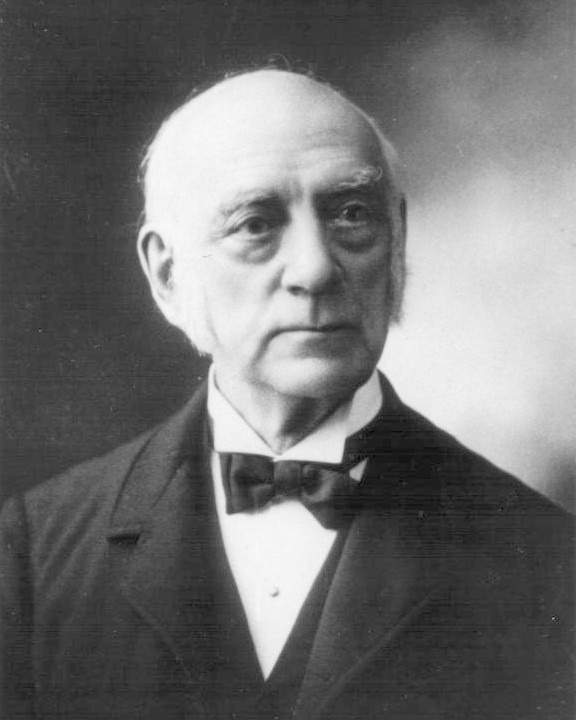 |
| James Curtis Hepburn |
When you use a computer, how do you type Japanese? Most of the people utilize combination of alphabets to show Japanese letters. The creator of this system, Hepburn Romanization, is James Curtis Hepburn. Hepburn contributed to Japanese development not only as a creator of the Romanization system, but also as a doctor, educator, missionary, and an editor of Japanese English dictionaries.
Hepburn was born in Pennsylvania in 1815, and he learned medical science and became a physician. On the other hand, as he aspired to mission, he moved to Japan as a medical missionary in 1859.
He opened a small clinic in Yokohama for free because he wanted to help Japanese people while Tokugawa shogunate had prevented him to open it. At first, Japanese people had guarded against foreigners, but his tender attitude toward Japanese neighbors and developed Western medical techniques was attractive, so the clinic became crowded. Overall, he treated more than 10,000 patients in Japan.
He taught his knowledge to Japanese students with his wife. As Japanese people started realizing the importance of foreign language and studies, the shogunate offered Hepburn to teach it, and sent nine students. He taught Western medical science, and his wife, who used to be a teacher in New York, covered English education. Later, he established Hebon-juku which is a precursor of Meiji Gakuin University. And another teacher at Hebon-juku founded Ferris Jogakuin. It means Hepburn was concerned with foundation of two famous schools in Japan.
In addition, he worked as a missionary by translating the Bible. It was hard task because Christianity was prohibited by the shogunate in those days. Hepburn and other missionaries worried how to diffuse doctrine of Christianity, and they decided to translate the bible. They started the work in 1872. At first, they referred to Chinese Bible, so Hepburn’s experience in China and Chinese knowledge was useful. They published some books from 1875 to 1880.
Hepburn spoke Japanese fluently, but other American people could not. Usually American and Japanese needed Chinese interpreter who understand both English and Japanese. Therefore, he published Japanese English dictionary to learn Japanese in 1867. His dictionary was the first Japanese English dictionary.
However, Hepburn spent difficult time because those two languages have totally different letters. Then, he created Hepburn Romanization. Thanks to this system, Japanese characters can be written in alphabet.
As Hepburn worked in many fields, he influenced Japan in some ways. So I asked group members what was the most remarkable thing by Hepburn. Each of them had different interests. Hepburn dealt with Japanese people for free. One member seemed to be impressed by his kindness. And one person is interested in translation, so she thought his translation work was great. Others thought that Hepburn was a great educator because he was related to two Universities. Through this discussion, I was surprised because I could listen to various answers. I personally think that Hepburn Romanization was his greatest job because we use the system even today, so I had guessed that most of people would also think so. Actually, they pointed out other things and no one answered that Romanization is the best. I learned that evaluation sometimes differs quite a lot depending on the person.
Before I searched Hepburn, I had only known that “Hebon created Hepburn Romanization”. I did not even know that Hebon is kind of his nickname, and his real name was Hepburn, and I also had never heard that he actually came to Japan as a missionary. It was surprising that one person mastered such broad areas of knowledge, and brought many results. Though he was a missionary, some of his achievements had no relation to Christianity. Through listening to other presentation, I knew that like Hepburn, many missionaries came to Japan and worked on medical treatment, education and other studies. The number of Christians did not increase so much in Japan; however, their efforts enriched Japanese country and all the people living in Japan.
References
“James Curtis Hepburn” Wikipedia, retrieved 2014, December 12 from http://en.wikipedia.org/wiki/James_Curtis_Hepburn
Mochiduki, Y. (1987). ヘボンの生涯と日本語. Tokyo: Toyo Insatsu Kabushikigaisya.
Takaya, M. (1961). ヘボン. Tokyo: Nihon Rekishi Gakkai.
Takaya, M. (1961). ヘボン. Tokyo: Nihon Rekishi Gakkai.


